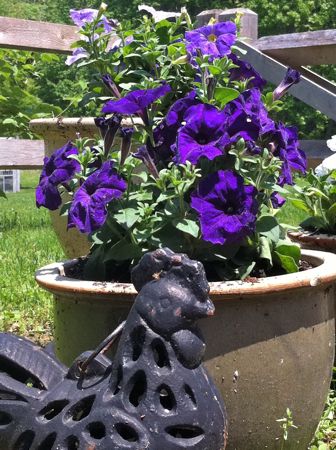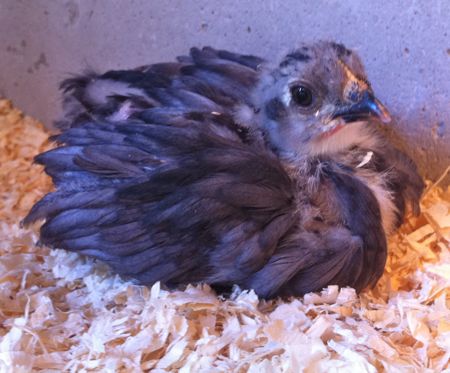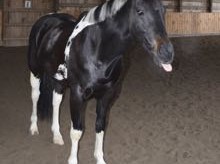There’s always something going on here, but I’m hoping that we’ve seen the end of the major storyline of the last two weeks – the outbreak of a deadly respiratory disease in the HenCam flock.
Among domestic farm animals, contagious diseases can hit fast, spread even as you isolate the first animal that shows the symptoms, and kills before you have a chance to weigh your options. Ask a farmer. Everyone has a story to tell. Backyard flocks are not immune. Wild birds fly in and out of the coops, snatch food from the feeders and leave bacteria, viruses and parasites behind. Factory farmers use this as an excuse to confine birds indoors, but that causes other health issues and is one reason why those farmers rely on sub-therapeutic feeding of antibiotics. I believe that the good of an outdoor life outweighs the risks. My chickens will remain outside.
I don’t know why Lulu came down with mycoplasma, and I don’t know why of all of the hens, that she was the one most susceptible and the one to die. I do know that more chickens would have succumbed if not for antibiotics. Siouxsie and Maizie were both on the brink. Thank goodness for drugs. Unfortunately, the drug that used to be prescribed, and was highly effective, Baytril, is now prohibited for poultry. Why? Because those factory farmers fed it to their chickens to get increased production. They got that, plus antibiotic-reistant bacteria that was passed along to consumers, which is a huge health threat to humans.
Anyway…
Luckily, there’s a vet nearby who dispenses drugs for poultry. She provided doxycycline in pill form for the two sickest birds, Maizie and Siouxsie, and Tylan to put in the drinking water for the rest of the hens. Because Candy often drinks from their fount, we kept Candy in her hutch. Many of you were worried about her. Candy was a bit bored but it really and truly wasn’t a big deal. We let her hop around at night after the hens went to sleep.
The hardest part of giving drugs to the hens isn’t getting a chicken to swallow a pill (easy! Perhaps I’ll do a YouTube video,) it’s throwing out the eggs for thirty days after treatment with doxycycline. That’s how long it takes for the drug to clear their systems. Isn’t this sad?
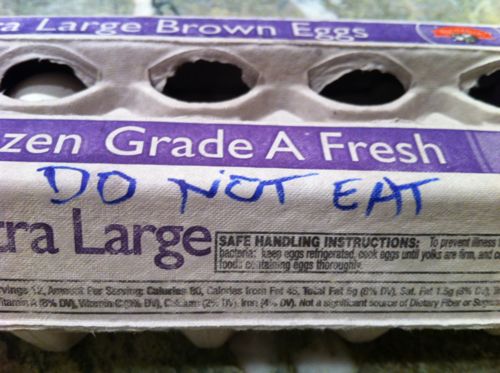
The antibiotics and the stress caused the hens to lay thin-shelled eggs. Broody Coco smashed two in her desire to sit on them, which covered her with sticky yolk. This is not a side-effect mentioned on the drug’s package, but one to be aware of! I gave her a bath. Which she liked. Especially the blow-drying.
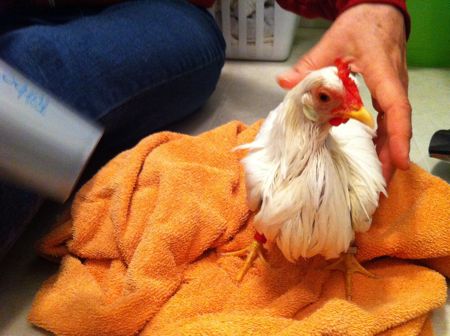
We were very concerned that the chicks would get Mycoplasma, so we instituted strict biosecurity. My new pink Wellies were worn when doing the Big Barn chores. Old red boots were worn in the HenCam coop. I didn’t handle the chicks. I didn’t let the hens from the infected barn wander anywhere near the chicks’ pen. It worked. The chicks never showed symptoms. And now the older, affected hens look fine – even Maizie and Siouxsie who were both near death.
The chicks not only didn’t get sick, but they have been robust and growing. At five weeks they are almost rid of their down, and colorful feathers are growing in. These chicks came in an order of 25, which I shared with friends who live up the road from me. A whole lot of the chicks were yellow fluff balls when they arrived and we couldn’t tell them apart when we divvied up the package. I’d ordered two Delawares, which start out yellow but become gorgeous white birds with black collars. My growing flock didn’t show any signs of developing white feathers, but Ken had two in his brooder. So on Saturday I swapped what I believe to be his two Buff Chantecleers that I’d been raising, for one Delaware. He had another white chick, but he’d become attached to the pretty girl, so I left her there.
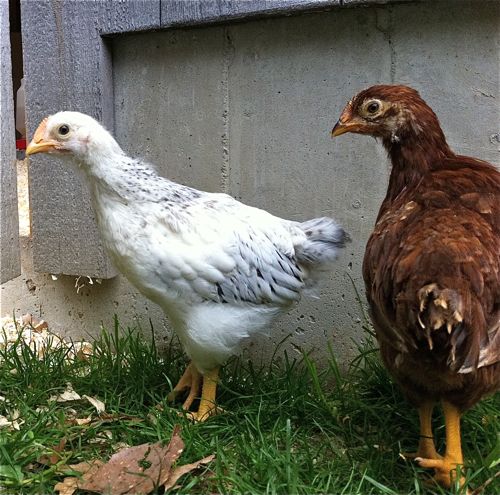
Isn’t she lovely? I confess to taking the nicer of the two, but Ken got two nice pullets in exchange. So I don’t feel too bad about the trade. (And he’s still talking to me, so I think all is settled.)
Meanwhile, the little blue chick (who will likely be named Little Blue because that’s what everyone calls her) is still weak and still half the size of the others. She walks funny, too, and I think it’s her cochin feet feathers tripping her up, so I trimmed them. It seems to help. I know Little Blue is okay, though, because no one picks on her and she has no trouble being with the others. See?
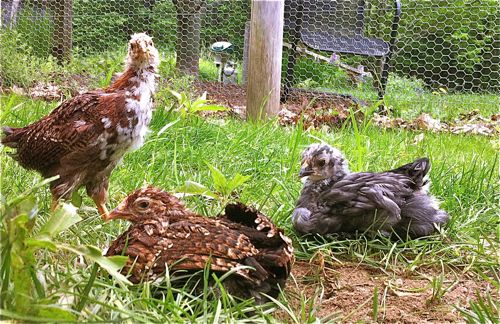
I still don’t know what breeds the others are! Supposedly I have three Speckled Sussex. If I do, they’ve got markings not accepted by the American Poultry Association show standard. Look at that white breast on the one standing.
I’ll be naming them all after gemstones soon. Steve thinks that Little Blue should be called Hope Diamond. It’s a nice thought, but she already has a name that’s stuck. That happens sometimes.






